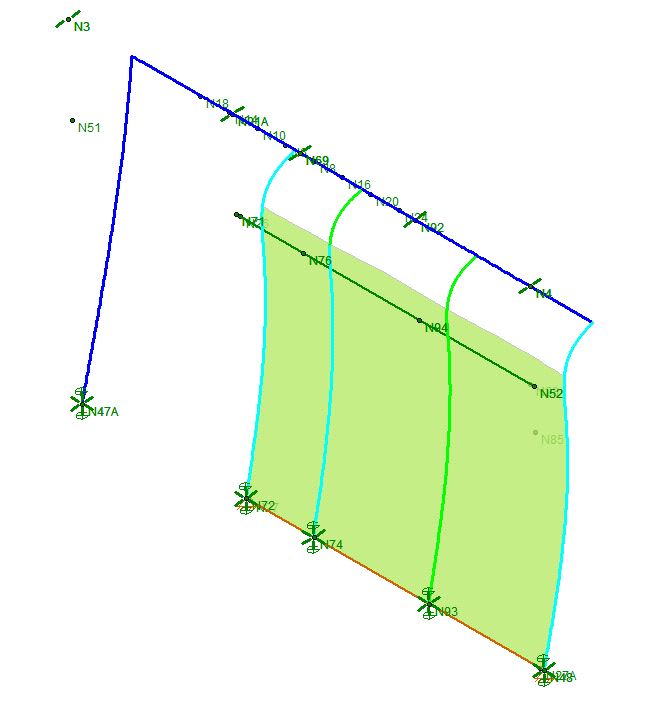Hey all,
I have a single story building with an interesting entry tower. There is clerestory glass and ground to roof glass for two of the exterior walls. My plan was to provide steel framing in this area. This is about 24 feet tall and the architect is hoping for some relatively small columns. Typically, I would provide moment frames but in order to minimize any potentially large HSS columns, I'm thinking about providing shear walls instead. Due to the clerestory glass I cant have the wall continue to the roof. I'll need a steel girt to support the head of the wood wall so I'm thinking about typing it to the top of the wall for in plane shear transfer. One side of the wall will also tie into the steel columns which I will connect for uplift.
Basically I have steel drag strut on top of my wood wall and then one of my shearwall endposts is a steel column. The base plate of the column will be designed for uplift and basically becomes my holddown. I've attached a rough sketch for reference. I'm still just looking schematically here so I'm just looking to see what holes there are in this approach. Any comments or critiques are welcome.
As an aside the walls here will be framed by 2x10's so any additional comments about using 2x10 for studs in a shearwall are welcome.
I have a single story building with an interesting entry tower. There is clerestory glass and ground to roof glass for two of the exterior walls. My plan was to provide steel framing in this area. This is about 24 feet tall and the architect is hoping for some relatively small columns. Typically, I would provide moment frames but in order to minimize any potentially large HSS columns, I'm thinking about providing shear walls instead. Due to the clerestory glass I cant have the wall continue to the roof. I'll need a steel girt to support the head of the wood wall so I'm thinking about typing it to the top of the wall for in plane shear transfer. One side of the wall will also tie into the steel columns which I will connect for uplift.
Basically I have steel drag strut on top of my wood wall and then one of my shearwall endposts is a steel column. The base plate of the column will be designed for uplift and basically becomes my holddown. I've attached a rough sketch for reference. I'm still just looking schematically here so I'm just looking to see what holes there are in this approach. Any comments or critiques are welcome.
As an aside the walls here will be framed by 2x10's so any additional comments about using 2x10 for studs in a shearwall are welcome.


